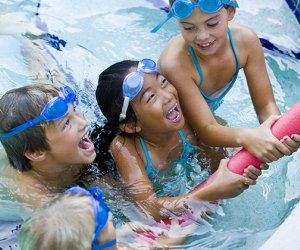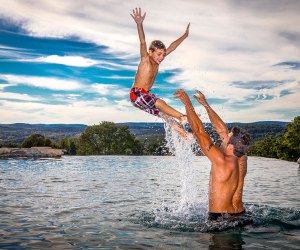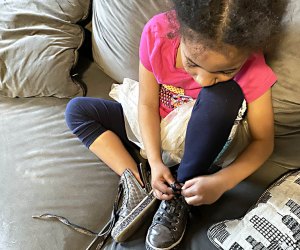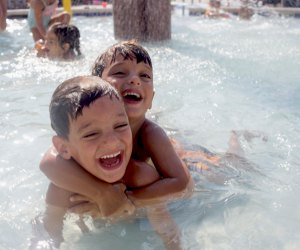Water Safety Musts for Kids at the Beach, Pool and Lake
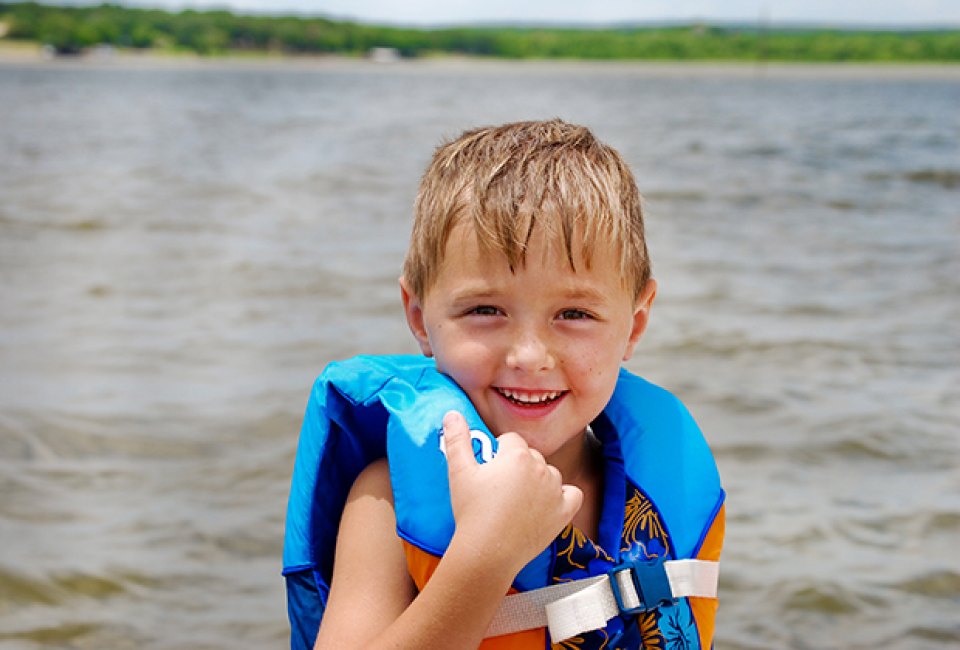
It’s a basic law of summer that a dip in a cool pool, or a splash in the ocean, makes everything right in the world. With many families gearing up for ocean and pool trips, or lake vacations, we talked to swim instructors and water safety experts around the country to gather the most important tips for keeping water-loving kids safe this summer.
OUR LATEST VIDEOS
The bottom line? All kids should learn how to swim— the sooner, the better. Every day, about 10 people die from drowning in the United States, and at least two of those victims are children under the age of 14, according to the Centers for Disease Control and Prevention. Already this season, NYC lost a teen to a pre-Memorial Day weekend drowning at a popular Queens beach. For toddlers the stats get even scarier: drowning is the second leading cause of death for kids ages 1 to 4.
It’s likely that you can find recommended kids’ swim classes near you on your local Mommy Poppins site, such as our baby-and-parent swim roundup in NYC or private swim classes in LA. You can also search for local swim classes via the American Red Cross or your local YMCA. The earlier you enroll your child, the better: studies show that completing swim classes can reduce the risk of drowning by 88 percent among children ages 1 to 4 years.
Tips Before Leaving Home
Water safety begins before you reach the water, including agreeing upon the rules and guidelines of water play for your family. These might include reminding kids to only swim in areas supervised by a lifeguard, always swimming with a buddy, wearing U.S. Coast Guard approved life jackets on boats and all the time for non-swimmers.
The golden rule, whether you’re bound for the ocean, pool or lake, is that an undistracted adult should always stay within arm’s reach of non-swimmers and new or weak swimmers–even when a lifeguard is on duty, according to experts. Parents, or supervising adults, are the frontline against drowning, says Nichole Steffens, aquatic director for the Greater New York chapter of the Red Cross. “That means the adult in charge must avoid any distraction: phone calls, texting, anything that takes the adult’s attention away from the child. It only takes a few seconds for emergencies to happen in the water.” Staying within arm’s reach is also key to keeping track of children at crowded city pools and beaches. For older children, always agree upon a designated meeting spot—say, next to the lifeguard’s station—in case you lose track of each other.
Besides swim lessons, you might teach kids about water safety with fun lessons from WHALE Tales before you hit the pool, or download the FREE Red Cross Swim app before the next family beach trip. It includes swim lesson progress tracking and kid-friendly games, quizzes and videos about helping children prevent, prepare for, and respond to water emergencies.
Read on for important safety tips in each of our favorite swimming holes: oceans, lakes and rivers and pools.
Pool Safety Tips
1. As soon as you arrive, find a spot to meet in case you get separated.
2. Review pool safety rules; pool rules are usually posted around the pool area.
3. Set a deep-end limit for your child; you might show your child pool markers—ropes or cones or numbers at pool’s edge—to mark boundaries of where they are allowed. If you are unsure about this, Steffens recommends a simple five-step test to determine if your child may enter the deep end.
Can they do the following? Enter the water and go completely under; bob up to the surface and float or tread water for at least one minute; turn completely around and face where you can exit the water; swim at least 25 yards, either on your front or back; exit the water without using steps of a ladder.
4. Swim with a buddy even if a lifeguard is on duty. “A buddy is a person who helps another person follow the rules and can get help in an emergency,” says Steffens. Older children should pair up with a sibling or friend (with similar swimming ability) and stay with that buddy at all times. Explain to your child that they should look out for each other at all times and help enforce the rules. If one person gets hurt, the other can signal to an adult or lifeguard for help.
5. Designate a “water watcher” at private home pools where there is no lifeguard. “This could be a teenager, a babysitter who is a strong swimmer, but preferably not a parent because parents might get distracted with their own kid's needs,” says Sydney Lovelace, an LA-based swim coach and instructor. “It’s easy to think: Someone else has got this, but another parent might not; they might be busy or distracted by their own child.”
6. Skip the floaties or water wings. “In my business, we can’t stand water wings,” says Lovelace. “They teach children that the best way to move is in a vertical position, feet downward, so they’ll try to run in the water. As soon as the wings are off, a child will not know what to do. They’ll try to run in the water and won’t be able to.” Life jackets, on the other hand, allow a child to lie horizontal and kick, a much safer position.

Always keep young children within arm's reach around any body of water.
Ocean Swimming Tips
1. Set up your family’s beach spot near an open lifeguard tower. Teach kids to differentiate between open and closed lifeguard towers (if the flag is up, it’s open), and remind them to immediately go to the closest open lifeguard station if lost.
2. At the ocean, where drowning incidents may happen in an instant even without the presence of rip currents, always keep toddlers and young children within arm’s reach. Waves, even small ones, can be unpredictable and powerful.
3. The first thing coach Syd Lovelace teaches students is to use their eyes and minds to assess conditions before barreling into the waves. “Rushing into the water without first checking conditions is how most kids get into trouble in the ocean,” says Lovelace. As soon as you get to the ocean, sit down together and ask your child to look at the ocean and describe what she or he sees. Conditions you might talk about: what size are the waves today; where is the wind blowing from, do you see any big rocks on the beach? “This is about getting into healthy habits at the beach, using their perception and judgment,” says Lovelace.
4. Next, determine a water marker for your child. “My mom used to say, ‘Don’t go out too far.’ But how far is too far?," says Lovelace. "I tell parents: give a water position on your child’s body. For example, for a weak swimmer, no farther than the tush.” Teens might be able to go farther, but remind them to always check that they can still touch the bottom.
5. Understand waves. Lovelace teaches kids two techniques to avoid getting knocked over by waves: Turn sideways when wading into the ocean instead of letting waves slap you in the face, legs spread out wider than shoulders, or duck dive. With big waves, Lovelace teaches students to duck dive, essentially getting under a wave before it crashes into them. “When we see a wall of white water coming at us, our instinct is to keep our heads above it,” says Lovelace. “But if you’re up to your chest in water and a 3-foot wave is coming fast, the path of least resistance is to go underneath it.”
Never turn your back to the waves. Lifeguards look for people who’ve stopped looking at waves, because they’re unaware when the next set of waves will crash into them. That’s dangerous. “You gotta expect something’s coming every five to six seconds,” says Lovelace.
6. Beware of rip currents: Check your local forecast before setting out for the day and most importantly, teach children to recognize a rip current and how to handle getting caught in one. We wrote about rip currents before, noting that instead of trying to swim against the current, swimmers should swim parallel to the beach, out of the current, or just float until help arrives. While riptides are common near piers and jetties, rip currents occur elsewhere along the beach, too. Water might look foamy and brown, or a section might appear like a river, or a jumbled section amid the waves. “You cannot fight against the ocean,” says Lovelace. “It’s important to remember that rip currents aren’t half a mile wide. Sometimes you just need to swim 10 yards to the left or right to get out.” The most important thing, he notes, is not to panic: remind yourself, and teach your child, how to take deep relaxing breaths (puff your cheeks when exhaling) and stay in control and relaxed.
Lake and River Safety Tips
1. As with any water situation, keep young non-swimmers and weak swimmers within arm’s reach at all times. Just like ocean swimming, lake or river swimming is quite different from pool swimming. Cold air and water temperatures, currents, rocks and other unstable elements, and unpredictable weather conditions can require greater specific skills. Stay within designated swimming sections.
2. Leave the toys at home. Red Cross aquatic director Steffens cautions against that inflatable toys, blow-up rafts, which can take off with the wind and “create obstacles for lifeguards.” “Never allow a non-swimmer or weak swimmer to depend on inflatable toys or floatation devices,” she writes via email. A life jacket is a much better option for new swimmers, she says.
3. Boating age? The U.S. Coast Guard recommends against taking infants under 18 pounds on boats because life vests may not fit safely, or perform as needed on too-small children. Always test out life jackets ahead of time to make sure a child cannot slip through the neck hole and will remain above water when floating freely.
4. Parents should spot, and teach children to recognize, potentially hazardous conditions such as fast-moving currents, underwater obstacles like rocks or vegetation that could entangle feet, sudden drop-offs that change water depth and unsafe diving spots. Also, teach your child to stay clear of other people’s lake or river activities, such as a boat's wake that could sweep them up.
5. Check weather and water conditions before your trip, and leave the water at the first sign of thunder and lightning. If an electrical storm occurs (a storm with lots of lightning), stay indoors at least 30 minutes after the last sounds of thunder. If going indoors isn’t possible, avoid open areas, metal objects and tall, isolated trees.
6. Don't let kids operate boats or water crafts like jet skis until properly trained and instructed.
CPR Skills for an Emergency
Just as important as swim classes: CPR and emergency response. As a parent, you hope you’ll never need to use CPR or other life-saving techniques, but rather than rely on the skills of a nearby stranger in an emergency, it is always best to be prepared yourself. The same goes for grandparents and caretakers who will be watching your child. We’ve written about Baby CPR resources, but both the Red Cross and the American Heart Association offer classes. Children can also learn how to handle unexpected water situations if you enroll them in water safety classes, such as this YMCA program.
All images via Bigstock







